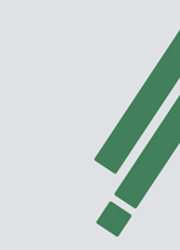Summary
This fifth national report provides an overview of 260 Australian Government-funded organisations that aim to improve health outcomes for Aboriginal and Torres Strait Islander people. It presents findings from the 2012-13 data collection on health services and activities provided, clients seen, staffing levels and challenges faced by these organisations.
In 2012-13, most (83%) organisations delivered health services through one site, while 17% reported two or more delivery sites. Two-thirds of organisations (67%) were Aboriginal Community Controlled Health Organisations (ACCHOs), 15% were other non-government organisations and 18% were government-run. Most organisations (70%) were accredited against either the Royal Australian College of General Practitioners (RACGP) or organisational standards. This was higher compared with 2011-12 (64%).
Staffing increased in primary health-care services
In 2012-13, 205 (79%) organisations provided primary health-care services to Aboriginal and Torres Strait Islander people, and there were 21 fewer primary health-care organisations in the data collection than in 2011-12 due to rationalisation of reporting requirements. Nevertheless, the number of full-time equivalent (FTE) staff employed increased by over 20%, from about 5,500 as at 30 June 2012 to around 6,700 FTE staff as at 30 June 2013. This increase may be due to additional Australian Government funding for new positions. These organisations were also assisted by 330 FTE visiting health professionals, paid for by other organisations.
The primary health-care organisations served around 417,000 clients in around 4.1 million contacts. The number of clients decreased by 6% compared with 2011-12 (445,000), partly due to the lower number of organisations in the data collection. Combined with increasing staff numbers, this led to an increased staff to client ratio in every remoteness area.
Most counsellors in social and emotional wellbeing or Link Up counselling services were Indigenous
In 2012-13, 98 (38%) organisations provided social and emotional wellbeing or Link Up counselling services. These organisations employed 186 counsellors and nearly two-thirds of these (64%) were Indigenous. Around 17,700 clients had around 89,100 contacts in total.
New substance-use organisations increased client numbers and episodes of care
In 2012-13, 63 (24%) organisations provided substance-use services. These included new organisations with large client bases. As a result, both episodes of care (around 305,000) and client numbers (around 50,000) were much higher compared with 2011-12 (74,000 and 32,600 respectively). Most episodes of care (91%) were for non-residential, follow-up or after care services.
Key gaps and challenges
Sixty-two percent of all organisations reported mental health and social and emotional health and wellbeing as a service delivery gap in their communities.
Recruitment, training and support of Aboriginal and Torres Strait Islander staff (70%) and staffing levels (58%) were reported as key challenges to providing quality services.



